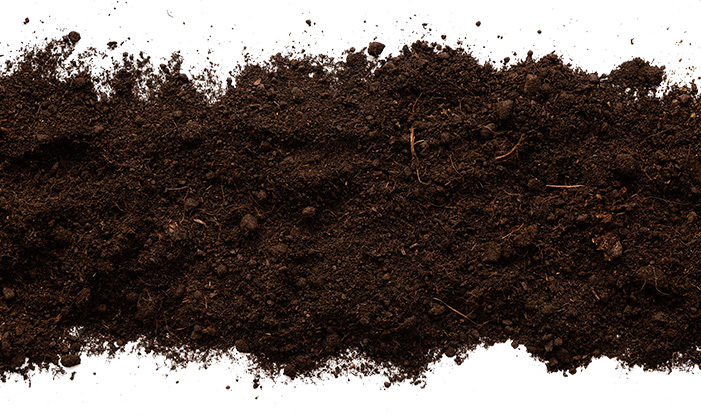We walk over it and wash it away daily, and although we don’t think about it much, soil is an important part of our lives. All our food comes from the soil, the materials we use in our homes and jobs come from beneath the soil or grow from it. Rarely do we appreciate it for all it does for us, and even less often do we consider where it comes from.
The Makeup of Soil
In essence, soil is a combination of two things; parent material – meaning the rock or base layer beneath the soil, which can be inches or thousands of feet beneath the surface; and organic material from plants and animals at the surface.
When we first observe soil, we may notice the rich black and brown colors and its ability to retain moisture. This first layer is called the O horizon, named for the organic matter it contains. We find roots and fungi weaving through it and insects and invertebrates making their homes within it; these living organisms are essential components of this layer. Each autumn, fallen leaves slowly break down and add essential nutrients to it. Insects and animals add organic matter to it throughout their lives as well as when they die. All these things contribute to the O horizon’s soft, pillowy texture and high nutrient content.
Deeper Layers of Soil
Digging deeper we can reach more horizons, each one with less organic material and more parent material. Eventually we reach the original mineral deposit that constitutes the majority of the soil. These materials vary from place to place and become a defining feature of the soil developing from them, influencing the soil’s texture and many of the minerals it contains. Over time, it becomes weathered and breaks down into smaller components, becoming more accessible to plants.
In southeastern Wisconsin our soils originate from glacial till – deposits left by the glaciers when they retreated over 10,000 years ago. In some places this glacial till is up to 600 feet deep. The parent material that the glaciers left for us is mostly brown clay and silt. These minerals combined with our state’s history of lush prairie and savanna gives us deep, nutrient dense, fertile soil that has become highly valued by farmers.
Importance of Caring for Soil
For all the things soil does for us, we should also consider what happens when we lose this vital resource. Impervious surfaces like parking lots, roads, and buildings cause rainwater to accumulate and funnel into natural areas. Water at high volumes and speeds can rip away topsoil and organic matter, washing it into our rivers and lakes. Then, not only do plants lose their livelihood, the chemistry of the water bodies can also be changed by the nutrients the soil adds, promoting algae growth and impacting water quality and the lives of aquatic animals.
Healthy soils are the basis of the food chain, providing for plants, animals, and humans in so many ways. And since it takes 100 years to make just one inch of topsoil, the things we do in our everyday lives, like planting native plants, supporting our local natural areas, and eating sustainably farmed foods, can make a huge difference.


